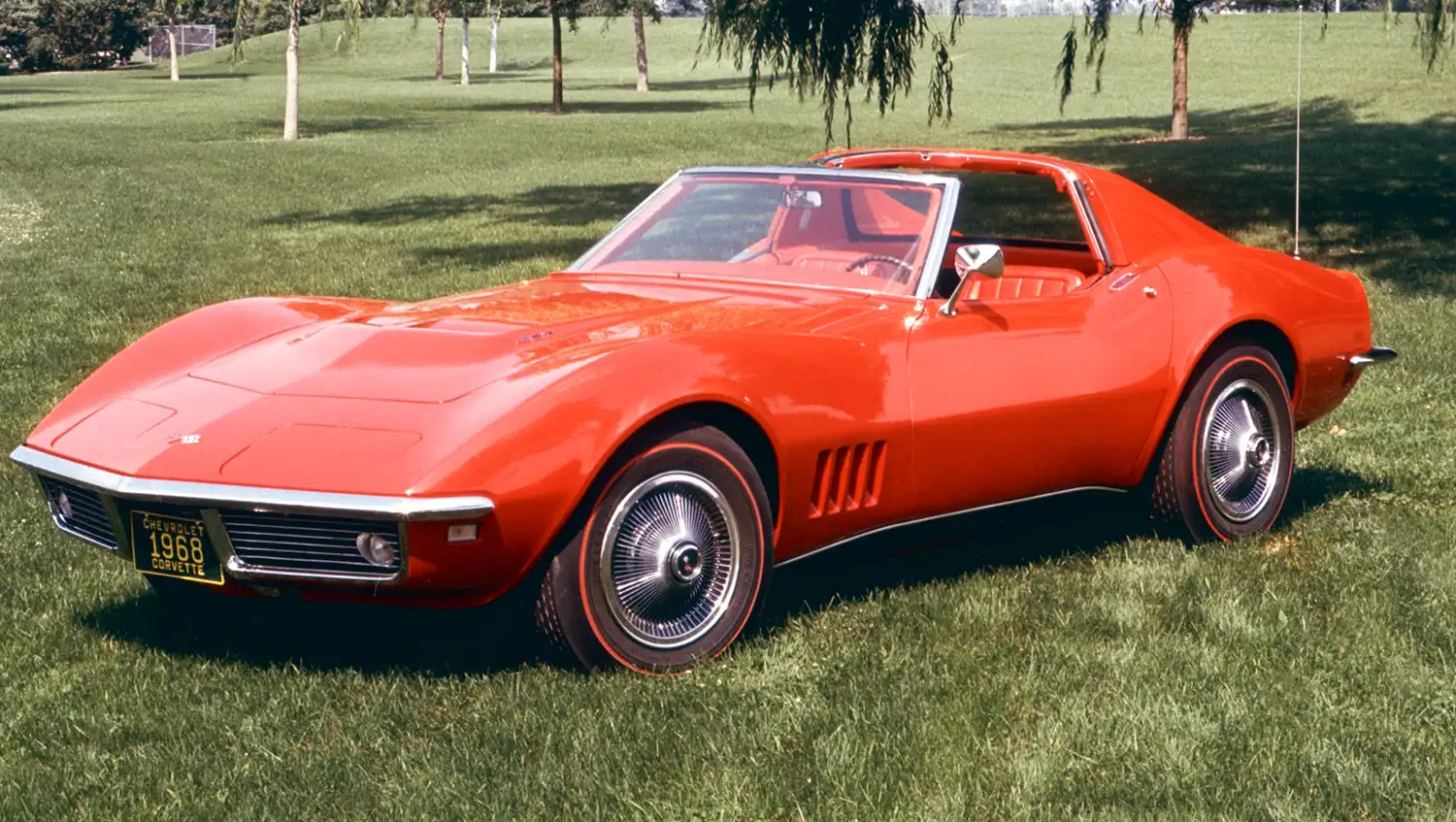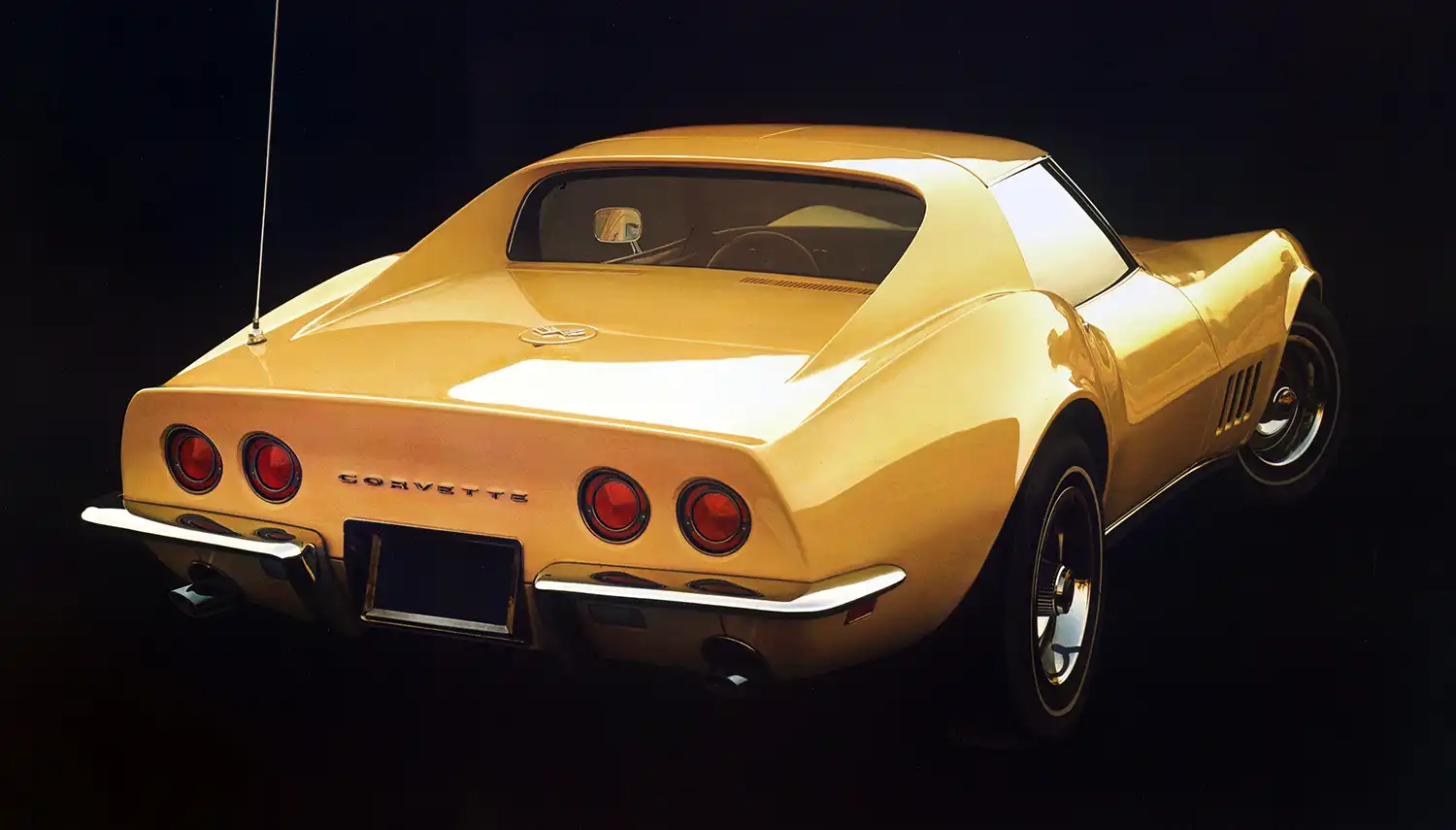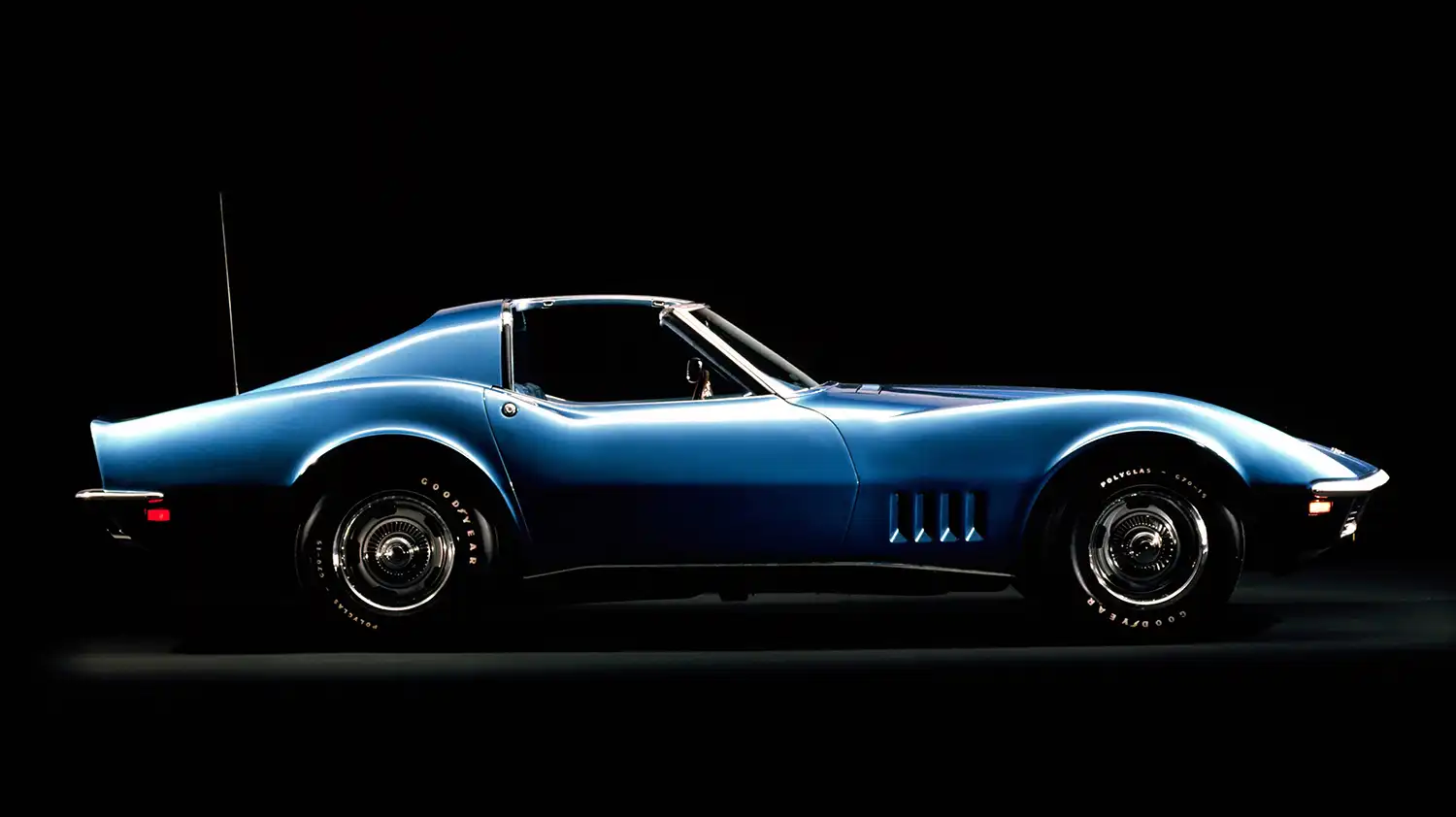
The Chevrolet Corvette, since its inception in 1953, had evolved through two distinct generations, each establishing its own character and appeal. The year 1968 witnessed a monumental shift with the introduction of the third generation, the C3. This new Corvette, heavily inspired by the Mako Shark II concept car penned by Larry Shinoda, represented a radical departure in styling, embracing aggressive curves and a shark-like profile. The 1968 model year was the inaugural year for this transformative design, setting the stage for over a decade of production with only gradual evolutionary changes. This marked a significant moment in Corvette history, solidifying its status as a true American icon of performance and design.
Powertrain and Performance: The 1968 Corvette offered a range of potent V8 engines, carrying over some familiar powerplants while also introducing new options. The standard engine was a 327 cubic inch (5.4-liter) small-block V8, available in a base 300 horsepower version and a higher-performance 350 horsepower L79 variant. For those seeking more power, several 427 cubic inch (7.0-liter) big-block V8 options were available, ranging from the 390 horsepower L36 to the formidable L71 Tri-Power (three two-barrel carburetors) rated at 435 horsepower and the even more potent L68 with a four-barrel carburetor also producing 400 horsepower. Transmission choices included a standard three-speed manual, an optional four-speed manual, and a Powerglide two-speed automatic. The big-block equipped 1968 Corvettes delivered exhilarating acceleration and a raw, visceral driving experience that defined American muscle cars of the era. The independent front and rear suspension system, refined from the previous generation, contributed to respectable handling capabilities for its time.
Design and Features: The 1968 Corvette’s design was a revolutionary departure from its predecessors. The “Coke bottle” curves, long hood, and short deck became hallmarks of the C3 generation. Pop-up headlights, a concealed windshield wiper system, and a distinctive “sugar scoop” rear window on the coupe added to its futuristic appearance. Inside, the cockpit was driver-focused, featuring a prominent center console and gauges angled towards the driver. Standard features included four-wheel disc brakes, a significant upgrade. Options included power steering, power windows, air conditioning, leather seats, and an AM/FM radio. The removable T-top roof panels on the coupe were a popular feature, offering a semi-open-air experience.

Variants and Models: The 1968 Chevrolet Corvette was available in two primary body styles: the Coupe and the Convertible. The Coupe model featured the distinctive “sugar scoop” rear window and the now iconic removable T-top roof panels. The Convertible offered a traditional open-top driving experience with a manually folding soft top. Notably, the “Stingray” name, which had been used for the C2 generation, was initially absent for the 1968 model year. It would reappear in 1969 as a single word (“Stingray”) and apply to both the Coupe and Convertible body styles. Therefore, while the 1968 Corvette embraced the styling that would later be associated with the “Stingray” moniker, the cars themselves were not officially badged as “Stingrays” in this inaugural year of the C3 generation. The choice between the Coupe and Convertible allowed buyers to select their preferred style, with both sharing the revolutionary new design and available powertrain options.
Legacy and Collectibility: The 1968 Chevrolet Corvette holds a significant place in automotive history as the groundbreaking first year of the C3 generation. Its radical new styling and potent engine options captured the spirit of the late 1960s. Today, the 1968 Corvette is a highly sought-after classic car, representing the dawn of an iconic design era. First-year models, particularly those with desirable engine options and in well-preserved condition, are highly valued by collectors who appreciate their historical significance and bold styling.
Summary:
- The first year of the C3 generation, featuring a revolutionary new design.
- Offered a range of small-block and big-block V8 engines.
- Available as a Coupe with T-tops and a distinctive rear window, and a Convertible.
- The “Stingray” name was not used on the 1968 models but the styling foreshadowed it.
- Introduced four-wheel disc brakes as a standard feature.
- A highly collectible classic car representing a significant design shift.
Disclaimer: Performance specifications and availability of features may vary based on the specific model, options, and original manufacturing details. Consult reliable sources and vehicle documentation for accurate information.
Source: Chevrolet
AI Assistance: Gemini
